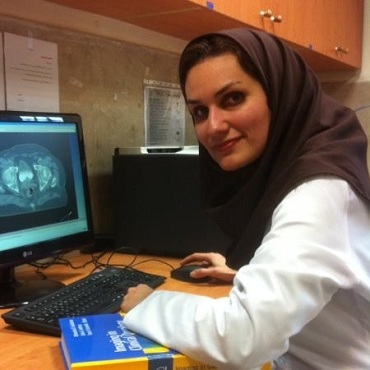Scientific Program

M Malekzadeh Moghani
Shahid Behesh University of Medical Sciences, Iran
Title: Pathological response predictors in neoadjuvant breast cancer, A report of Iran
Biography:
M Malekzadeh Moghani is an Assistant Professor at Shahid Behesh University of Medical Sciences (SBMU). He and his coworkers are working at Shohada hospital, which is one of the main referral centers of Tehran for this current research. He is the Head of Educa onal methods commi ee of EDO, SBMU, and the Collaborator in Cancer Research Center at SBMU in research and fellowship training. He also serves as the Head of Interna onal commi ee of Iranian society of Radia on oncologist, Co-partner in Advisory board of Breast cancer and cervical cancer, and the Member of na onal oncologic guidelines commi ee in Health ministry.
Abstract
Statement of problem: Breast cancer in Iran like other parts of the world is the ï¬ rst cancer in women; one of the classiï¬ ca ons is locally advance breast cancer (LABC) which despite improvements in treatment remains mostly incurable. All a empts now are to change what aff ects this issue. Neoadjuvant chemotherapy and pathologic complete response (pCR) is a goal in short me, which can predict treatment outcomes. The aim of this ar cle is to assess factors that infl uence pCR. Methodology: 214 breast cancer pa ents who received neoadjuvant chemotherapy in Tehran, Shohada hospital (one of breast cancer research center and referral hospital) during 2011 to 2017, were evaluated. The treatment regimen was consis ng of Antracyclin, taxane (plus trastusumab base on considera on of HER2/neu receptor). Diff erent variables; tumor characteris cs (appearance and size), and pa ents’ demographic data were evaluated. Sta s cal analysis was performed.
Findings: 214 of 2665 pa ents were LABC, with median age of 47.7, 40.4 % were advance stage and 38 % had pathologic grade 3. Finally 33.3 % achieved pCR; pCR was no signiï¬ cantly higher in posi ve history of pregnancy(78%) than pa ents without history of complete pregnancy(65%) (p=.024). There is a higher trend in stage II pa ents,63% in comparison to 46% in stage III,(p=.048), 65% in tumor by clinical size of smaller than 5 cm compare to 52% in larger mass (p=.038), pCR reported to be 75% in sample without lymphovascular invasion (LVI) but only 39% in posi ve LVI (p=.02), 87% in higher Ki67 index compare to 68% in sample with Ki67 percentage less than 10 (p=.067) and the signiï¬ cant diff erence was found in triple nega ve tumors,50% in comparison to 35% pCR in other group (p=.005). Conclusion and signiï¬ cance: We observe more occurrence of pCR in small, triple nega ve breast cancer without LVI. However the study was retrograde and we hope that in prospec ve future evalua on could iden fy other items.
- Cell Therapy
- Cancer cell
- Gene Therapy
- Genetic Engineering.
- Bioprocess
- Allotransplantation
- Adoptive Cell Therapy
- Embryonic Stem Cell
- Cancer Immunotherapy
- Molecular biology
- pharmacology
- Stem Cell Therapy

